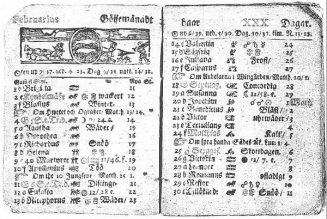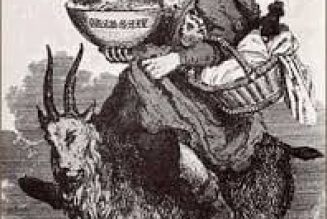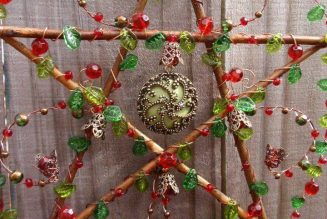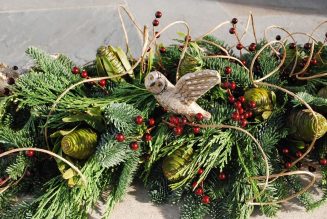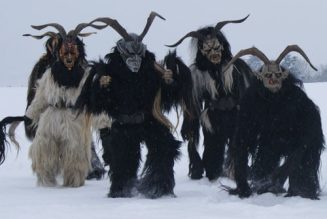
While it may be mostly Pagans who celebrate the Yule holiday today, nearly all cultures and faiths have held some sort of winter solstice celebration or festival. Because of the theme of endless birth, life, death, and rebirth, the time of the solstice is often associated with deity and other legendary figures. No matter which path you follow, chances are good that one of your gods or goddesses has a winter solstice connection.
Alcyone (Greek): Alcyone is the Kingfisher goddess. She nests every winter for two weeks, and while she does, the wild seas become calm and peaceful. Alcyone was one of the seven sisters of the Pleiades.
Ameratasu (Japan): In feudal Japan, worshipers celebrated the return of Ameratasu, the sun goddess, who slept in a cold, remote cave. When the the other gods woke her with a loud celebration, she looked out of the cave and saw an image of herself in a mirror. The other gods convinced her to emerge from her seclusion and return sunlight to the universe. According to Mark Cartwright at Ancient History Encyclopedia, “[S]he blocked herself in a cave following an argument with Susanoo when he surprised the goddess with a monstrous flayed horse when she was quietly weaving in her palace with her younger sister Waka-hiru-me. As a consequence of Amaterasu’s disappearance the world was cast in total darkness and evil spirits ran riot over the earth. The gods tried all manner of ways to persuade the peeved goddess to leave the cave. On the advice of Omohi-Kane, cocks were set outside the cave in the hope their crows would make the goddess think that dawn had come.”
Baldur (Norse): Baldur is associated with the legend of the mistletoe. His mother, Frigga, honored Baldur and asked all of nature to promise not to harm him. Unfortunately, in her haste, Frigga overlooked the mistletoe plant, so Loki – the resident trickster – took advantage of the opportunity and fooled Baldur’s blind twin, Hodr, into killing him with a spear made of mistletoe. Baldur was later restored to life.
Bona Dea (Roman): This fertility goddess was worshiped in a secret temple on the Aventine hill in Rome, and only women were permitted to attend her rites. Her annual festival was held early in December. High-ranking women would gather at the house of Rome’s most prominent magistrates, the Pontifex Maximus. While there, the magistrate’s wife led secret rituals at which men were forbidden. It was even prohibited to discuss men or anything masculine at the ritual.
Cailleach Bheur (Celtic): In Scotland, she is also called Beira, the Queen of Winter. She is the hag aspect of the Triple Goddess, and rules the dark days between Samhain and Beltaine. She appears in the late fall, as the earth is dying, and is known as a bringer of storms. She is typically portrayed as a one-eyed old woman with bad teeth and matted hair. Mythologist Joseph Campbell says that in Scotland, she is known as Cailleach Bheur, while along the Irish coast she appears as Cailleach Beare.
Demeter (Greek): Through her daughter, Persephone, Demeter is linked strongly to the changing of the seasons and is often connected to the image of the Dark Mother in winter. When Persephone was abducted by Hades, Demeter’s grief caused the earth to die for six months, until her daughter’s return.
Dionysus (Greek): A festival called Brumalia was held every December in honor of Dionysus and his fermented grape wine. The event proved so popular that the Romans adopted it as well in their celebrations of Bacchus.
Frau Holle (Norse): Frau Holle appears in many different forms in Scandinavian mythology and legend. She is associated with both the evergreen plants of the Yule season, and with snowfall, which is said to be Frau Holle shaking out her feathery mattresses.
Frigga (Norse): Frigga honored her son, Baldur, by asking all of nature not to harm him, but in her haste overlooked the mistletoe plant. Loki fooled Baldur’s blind twin, Hodr, into killing him with a spear made of mistletoe but Odin later restored him to life. As thanks, Frigga declared that mistletoe must be regarded as a plant of love, rather than death.
Hodr (Norse): Hodr, sometimes called Hod, was the twin brother of Baldur, and the Norse god of darkness and winter. He also happened to be blind, and appears a few times in the Norse Skaldic poetry. When he kills his brother, Hodr sets in motion the string of events leading to Ragnarok, the end of the world.
Holly King (British/Celtic): The Holly King is a figure found in British tales and folklore. He is similar to the Green Man, the archetype of the forest. In modern Pagan religion, the Holly King battles the Oak King for supremacy throughout the year. At the winter solstice, the Holly King is defeated.
Horus (Egyptian): Horus was one of the solar deities of the ancient Egyptians. He rose and set every day, and is often associated with Nut, the sky god. Horus later became connected with another sun god, Ra.
La Befana (Italian): This character from Italian folklore is similar to St. Nicholas, in that she flies around delivering candy to well-behaved children in early January. She is depicted as an old woman on a broomstick, wearing a black shawl.
Lord of Misrule (British): The custom of appointing a Lord of Misrule to preside over winter holiday festivities actually has its roots in antiquity, during the Roman week of Saturnalia. Typically, the Lord of Misrule was someone of a lower social status than the homeowner and his guests, which made it acceptable for them to poke fun at him during drunken revelries. In some parts of England, this custom overlapped with the Feast of Fools – with the Lord of Misrule being the Fool. There was often a great deal of feasting and drinking going on, and in many areas, there was a complete reversal of traditional social roles, albeit a temporary one.
Mithras (Roman): Mithras was celebrated as part of a mystery religion in ancient Rome. He was a god of the sun, who was born around the time of the winter solstice and then experienced a resurrection around the spring equinox.
Odin (Norse): In some legends, Odin bestowed gifts at Yuletide upon his people, riding a magical flying horse across the sky. This legend may have combined with that of St. Nicholas to create the modern Santa Claus.
Saturn (Roman): Every December, the Romans threw a week-long celebration of debauchery and fun, called Saturnalia in honor of their agricultural god, Saturn. Roles were reversed, and slaves became the masters, at least temporarily. This is where the tradition of the Lord of Misrule originated.
Spider Woman (Hopi): Soyal is the Hopi festival of the winter solstice. It honours the Spider Woman and the Hawk Maiden, and celebrates the sun’s victory over winter’s darkness.


